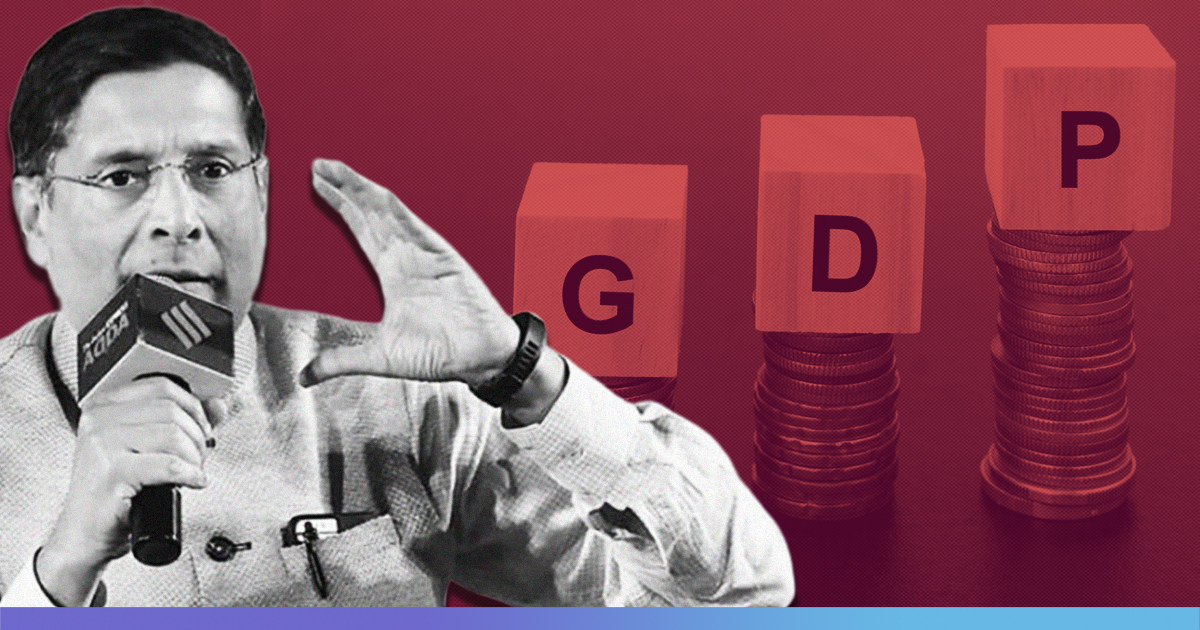In his most recent research paper, the former Chief Economic Adviser, Arvind Subramanian, has raised questions on India’s economic growth from the financial years 2011 to 2016.
The paper, titled, “India’s GDP Mis-estimation”, claims that “India changed its data sources and methodology for estimating the gross domestic product (GDP) for the period since 2011-2012…which has led to a significant overestimation of growth.”
As per government estimates, the average annual growth between 2011 to 2016 was 6.9 per cent, but according to Subramanian, the actual growth may have been between 3.5 and 5.5 per cent.

Wikimedia Commons
Dismissing the political perspective of the debate around GDP as a secondary consideration, Subramanian writes, “…I want to stress the technical, not political, origins of these changes, and underline that this paper focusses on the former…Today these changes are being seen as political because of other controversies that have arisen that, in principle, must be distinguished from the methodological change.”
The paper states that it is critical for an economy to keep on evolving its methodology to calculate GDP so that the investors’ and consumers’ confidence is maintained and optimum policies are implemented. It is much more imperative for “…modern, fast-moving, technology-driven economies, such as India…to maintain data quality and integrity.”
The research focusses on the technical and methodological changes in GDP calculation that started affecting the estimates from 2011 causing several anomalies to arise between the market realities and the GDP estimates.
The paper addresses three questions, “…is there a problem of mis-estimation of GDP growth after 2011? What is the likely magnitude? What is the potential cause, and in particular, how might the revisions in methodology have contributed to the over-estimation?”
Findings
While assessing whether there is a problem Subramanian compares India’s growth performance, as indicated by the GDP numbers, against its performance in other indicators that are usually associated with growth. He includes indicators such as manufacturing, production of consumer goods, exports, and fourteen other such indicative factors.
The results show that before 2011, 16 out of the 17 indicators grow along with the GDP. But post-2011, 11 out of 17 indicators are in negative correlation with the GDP growth. This means that while the GDP increased there was a decrease in the indicators. This leads to the conclusion that there is some issue in the methodology with which the GDP has been calculated since 2011.

India’s GDP Mis-estimation
Implications
Cautioning against taking the research at face value, Subramanian says “the results in the paper are by no means the final word”. Nonetheless, he exhorts that purely based upon the numerous anomalies that have been highlighted, this paper should be considered as evidence to an underlying problem and debated seriously.
That being said, if the results of the paper are in fact accurate then the implications are far-reaching.
“Inaccurate statistics on the economy’s health dampen the impetus for reform in serious and perverse ways”, says Subramanian. “For example, had it been known that India’s GDP growth was actually 4.5 per cent, the urgency to act on the banking system or on agricultural challenges may have been greater.”

flickr.com
On May 31, the Ministry of Statistics and Programme Implementation (MOSPI) officially released unemployment data for 2017-2018. The figures released by the Ministry pegged the unemployment rate at 6.1 per cent, which is highest since 1972-73.
Subramanian points out that “In reality, weak job growth and acute financial sector stress may have simply stemmed from modest GDP growth… Going forward, there must be reform urgency stemming from the new knowledge that growth has been tepid, not torrid.”
According to the research paper, there are two primary policy implications going forward, “First, growth must be restored as a key policy objective…Second, the quality and integrity of data needs to be improved.”
Additionally, “India must restore the reputational damage suffered to data generation in India across the board— from GDP to employment to government accounts—not just by conferring statutory independence on the National Statistical Commission, but also appointing people with stellar technical and personal reputations. At the same time, the entire methodology and implementation for GDP estimation must be revisited by an independent task force, comprising both national and international experts, with impeccable technical credentials and demonstrable stature.”
“The results in the paper suggest that the heady narrative of a guns-blazing India must cede to a more realistic one of an economy growing solidly but not spectacularly,” notes the former CEA.
Also Read: Govt Confirms Job Market Not Doing Well; Unemployment Rate At 6.1%, Highest In 45 Years











